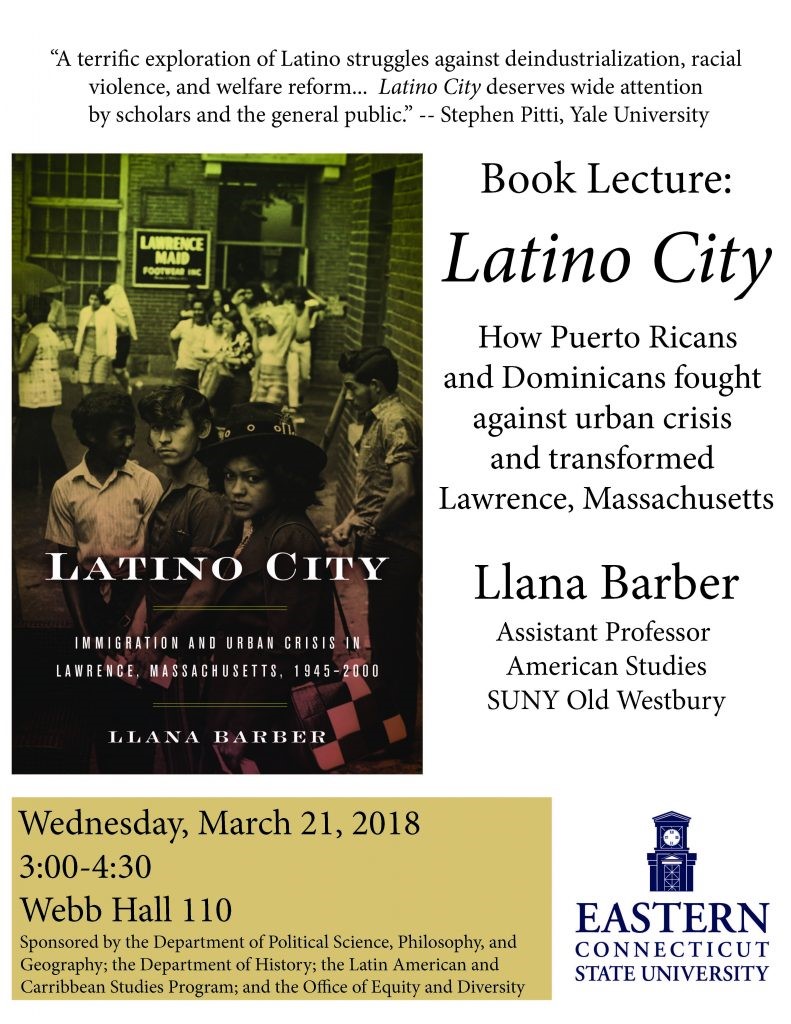- Apply
- Visit
- Request Info
- Give
News & Events
December 2022
Villanueva Presents Research on Argentine Wine Exports at Latin American Studies Conference
From Eastern News
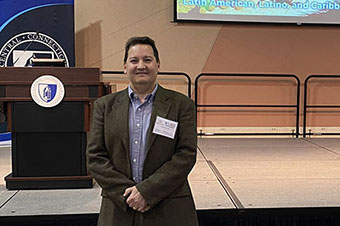 Emiliano Villanueva, associate professor of international business and chair of the business administration department, presented his research on Argentine wine exports at the New England Council of Latin American Studies Conference at Central Connecticut State University in New Britain, CT, on Nov. 5.
Emiliano Villanueva, associate professor of international business and chair of the business administration department, presented his research on Argentine wine exports at the New England Council of Latin American Studies Conference at Central Connecticut State University in New Britain, CT, on Nov. 5.
His presentation on the development of Argentine wine exports showed how Malbec wines from Mendoza and other wine-producing regions of Argentina have established themselves as the spearhead of the export dynamics of Argentine wine. According to Villanueva, Malbec wines are a sign of identity for Argentine wine in world markets and represent competitive strength related to other agri-food subsectors in the country. His research shows that Argentine wine exports have grown despite unstable national macroeconomics, establishing the country's trademark as the Malbec grape.
This conference is hosted annually by universities in New England. This year's topic was, “Living in Las Americas: Remembrance, Resilience, and Hope.” Presenters explored how Latin American societies and Latinx communities in the United States have dealt with the pandemic. The New England Council of Latin American Studies is the leading regional academic association focused on developing interests in Latin American and Latinx studies.
Zulma R. Toro, president of Central Connecticut State University, welcomed the more than 50 conference participants. Topics discussed ranged from “Identity Construction among Latino/a/x/e Communities in the United States” to “Community and National Building in Latin America.”
Dr. Villanueva is a member of the board of Latin American and Caribbean Studies at Eastern Connecticut State University.
Written by By Noel Teter
March 2018
Book Lecture - “Latino City” by SUNY Professor Llana Barber
October 2015
Cuba Comes to Eastern
From Eastern News Flash
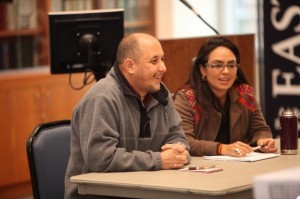 Cuban Educator Ariel Ducal Diaz said “Cuba is not a hell and it is not a paradise, and education and health are a right, not a business” during his presentation on “The New Normal: Towards Normalization of United States–Cuba Relations,” on Oct. 16 in the Paul E. Johnson Sr. Conference Room. “We will not privatize these rights, which are rooted in Cuba’s belief in social justice and the belief of a person’s right to life,” said Dacal Diaz.
Cuban Educator Ariel Ducal Diaz said “Cuba is not a hell and it is not a paradise, and education and health are a right, not a business” during his presentation on “The New Normal: Towards Normalization of United States–Cuba Relations,” on Oct. 16 in the Paul E. Johnson Sr. Conference Room. “We will not privatize these rights, which are rooted in Cuba’s belief in social justice and the belief of a person’s right to life,” said Dacal Diaz.
This past December, President Barack Obama said “it’s time for a new approach” and announced that the United States was taking steps to restore full diplomacy with Cuba, a move that ended 50 years of strained relations with the Communist nation.
Two big challenges going forward, Dacal Diaz said, are for the United States to accept Cuba’s fundamental belief in independence and social justice. “These two matters are like two sides of a coin. People must have a right to self-determination and the right to live. It is not possible to secure life if life is viewed as a commodity.” The second challenge for Cuba is that, because of the continuing economic blockade of the United States, the island nation needs an infusion of capital to sustain its system. “We want to be a good model for social and economic democracy, but if your big neighbor wants to come into your house with the same old attitudes of wanting to dominate your home, that makes the challenge difficult.”
In 1959, 80 percent of Cuba’s trade was with the U.S. In 1989, 85 percent of it was with the Soviet Union. To start redevelopment, Diaz used the imagery of a levee holding back water to describe how Cuba is dealing effectively and efficiency with the new influx of capital sure to come as a result of Obama’s decision. “We have learned from past experience. We have created laws on foreign investments. No one country will ever have more than 30 percent of foreign investment in Cuba.”
April 2015
Eastern Professor Maline D. Werness-Rude Publishes Book on Maya Imagery
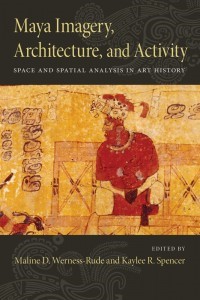 Last April, the University of New Mexico Press published the book Maya Imagery, Architecture, and Activity: Space and Spatial Analysis in Art History, co-edited by Maline Werness-Rude, a professor in the Art and Art History department at Eastern Connecticut State University, and Kaylee Spencer, a professor in the Art Department at the University of Wisconsin-River Falls. As noted scholar Rex Koontz states, “This volume brings together the best recent work on Mesoamerican space and leavens it with some of the most sophisticated, productive theories of spatial analysis from across the humanities and social sciences.”
Last April, the University of New Mexico Press published the book Maya Imagery, Architecture, and Activity: Space and Spatial Analysis in Art History, co-edited by Maline Werness-Rude, a professor in the Art and Art History department at Eastern Connecticut State University, and Kaylee Spencer, a professor in the Art Department at the University of Wisconsin-River Falls. As noted scholar Rex Koontz states, “This volume brings together the best recent work on Mesoamerican space and leavens it with some of the most sophisticated, productive theories of spatial analysis from across the humanities and social sciences.”
Werness-Rude and Spencer co-authored the introduction, which is meant as a guide for ways of seeing and thinking about how ancient and modern Maya populations structured their world. Werness-Rude also authored her own chapter, titled “Space Men Carving Out a Sense of Place in the Chocholá Style,” which focuses on analyzing a specific set of vessels made in the Yucatan Peninsula c. 700-800—why were they made, for whom, and what messages were they designed to send?
Many chapters in the volume, including Werness-Rude’s, explore the Maya concept of a layered universe as it appears in ancient iconography and as it relates to ancient supernatural entities, dead elites’ movement into the afterlife (while preserving a connection with the living), and modern efforts to locate communities at the center of a continually renewed cosmos. The mapping of political, economic and social space acts as another major theme, both in Werness-Rude’s chapter and in the book as a whole, with authors exploring the spatial dissemination of politically and socially charged objects, monuments, and architectural forms. Finally the experiential nature of space is privileged throughout—after all, one can only understand space through experience, which it in turn frames and directs. As archaeologist George Bey III says, “…With particular emphasis on how space was and continues to be sacralized, experienced, and used by the Maya, the book is full of new ideas and rethinking of older ones. The authors bring a wide range of theoretical approaches to the study of space. So one learns a lot about not just how the Maya used space but also about how we can study it.”
April 2015
First Annual Latin American and Caribbean Studies Conference
Written by Kelsey Tuller
On April 24 2015, Eastern Connecticut State University hosted its first Latin American and Caribbean Studies Conference. Many students and faculty were in attendance to learn from and engage with panels that spanned several disciplines. To kick off the conference, Kim Silcox and Luis Rodríguez of the Center for Community Engagement, David Stoloff from the Education Department, and Rose Marie Hernández, the Puentes al Futuro/Bridges to the Future program coordinator, made up a panel discussing educational experience in and about Latin America and the Caribbean. “The Puentes al Futuro/Bridges to the Future program has fostered Latino cultural education in Windham schools, as well as broadened Eastern student’s understanding of the rich cultural history of our community,” Rodríguez said. The conference hoped to deepen that understanding at Eastern, by hosting in-depth discussions and posing meaningful questions to its audience about the Latin American and Caribbean world.
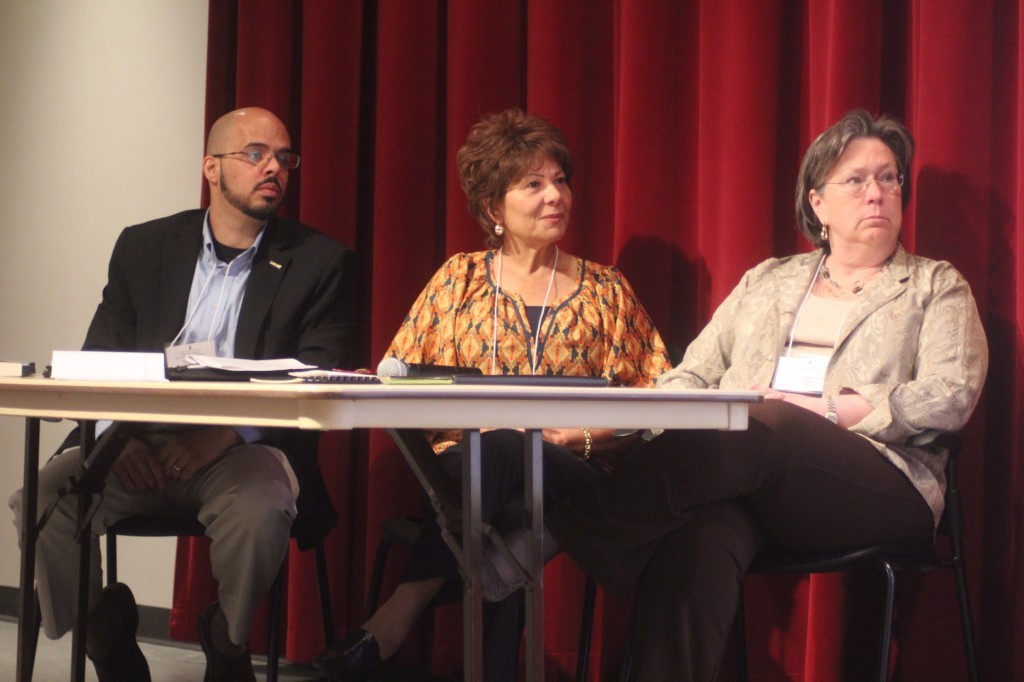
Other panels throughout the day discussed tourism, politics and economics in Latin America and the Caribbean. Professors that participated included Emiliano Villanueva of the Business Administration Department, Ricardo Pérez and Dennis Canterbury of the Sociology, Anthropology and Social Work Department, Martín Mendoza-Botelho of the Political Science, Philosophy and Geography Department, Joan Meznar of the History Department, and Malin Werness-Rude of the Art and Art History Department.
The keynote address was given by Kimberly Jones, Ellen and Harry S. Parker III Assistant Curator of the Arts of the Americas at the Dallas Museum of Art. Jones discussed her work on water management and its symbolic importance to life in the early northern Andes. “The emphasis placed on water, and its physical, social and ideological appropriations within a cultural landscape, has roots in and developments from over 3,000 of water management in the Andean highlands,” Jones said.
The conference, with his breadth of coverage on an important area in the 21st century, and particularly at Eastern, will surely become an important annual event in the years to come. The conference was made possible with the support of the Latin American and Caribbean Studies Faculty Board, the Department of Art and Art History, the Department of Sociology, Anthropology and Social Work, as well as the Organization of Latin American Students.


